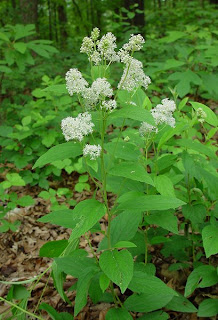CHICORY

Latin Name: Chicorium intybus
Alternate Names: Endive, Succory, Watcher Of The Road, Barbe De Capucin (Beard Of The Monk)
Family: ASTERACEAE
Parts Used: Root (collected before flowering), leaves.
Properties: Antibacterial, Appetizer, Astringent, Bitter Tonic, Cholagogue, Depurative, Digestive Tonic, Diuretic, Hepatic, Laxative, Nutritive, Stimulant, Stomach Tonic, Tonic
Internal Uses: Acne, Cellulite, Constipation, Diabetes, Eczema, Gallstones, Gastritis, Gout, Hepatitis, Jaundice, Liver Stagnation, Lymphatic Cancer, Rheumatism, Urinary Infections
Internal Applications: Tea, Tincture, Capsules, Syrup.
It is a mild laxative. Chicory is helpful for diabetics, since it contains inulin, a natural starch. It also promotes bile secretions and aids in the elimination of mucus and gallstones.
It is a mild laxative. Chicory is helpful for diabetics, since it contains inulin, a natural starch. It also promotes bile secretions and aids in the elimination of mucus and gallstones.
Topical Uses: Abscess, Boils, Inflammation
Topical Applications: The leaves are used as a poultice for inflammation, abscesses and boils.
Culinary uses: Young leaves are used in salads and as a cooked green, before the plant flowers. The buds can be pickled. Flowers are a beautiful edible garnish to salads and other dishes. The flowers may also be candied. Gather early in the day, as the flowers close in the afternoon. The root can be baked or sauteed as a vegetable. The root is roasted, which sweetens it, and then used as a coffee substitute or extender, as seen in Louisiana-style coffee.
Energetics: Bitter, Sweet, Cool, Moist.
Chemical Constituents: Inulin, sesquiterpene lactones (lactucine, lactupicrine), vitamins B, C, K and flavonoids, coumarins.
Contraindications: Excessive use can cause digestive disturbances and visual problems.
Comments: The species name, intybus, is derived from the Latin and Egyptian word tybi, meaning January, the month when Chicory leaves were most often eaten in that part of the world. Chicory is believed to be the flower of luck in German mythology. It is also one of the traditional bitter herbs of Passover.
Cows love to graze upon Chicory, but it will make their milk taste bitter if eaten to excess. Goldfinches eat the wild seeds. The Swedish botanist, Linnaeus, used Chicory in his floral clock, as the flowers open and close with such regularity.
Cows love to graze upon Chicory, but it will make their milk taste bitter if eaten to excess. Goldfinches eat the wild seeds. The Swedish botanist, Linnaeus, used Chicory in his floral clock, as the flowers open and close with such regularity.

